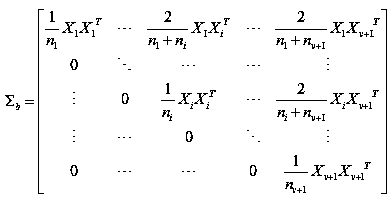Multi-source domain adaptive face recognition method
A face recognition and domain adaptation technology, applied in the field of face recognition involving domain adaptation, can solve the problems of training classifiers, no sample data, neglect and so on
- Summary
- Abstract
- Description
- Claims
- Application Information
AI Technical Summary
Problems solved by technology
Method used
Image
Examples
Embodiment Construction
[0046] Experimental data set: MultiPIE has a total of 337 categories with approximately 750,000 pictures containing different angles and different lighting. In this experiment, select (-45°, -30°, -15°, 0°, 15°, 30°, 45°) these 7 angles. The 337 categories are divided into 200 and 137 categories, 200 categories are used as training categories, and 137 categories are used as test categories. In the training sample, 7 pictures are randomly selected for each category, in the test sample, 1 picture is taken for each category in the picture library, and 4 pictures are randomly selected for the test sample. As shown in Table 2, take the source domain as -30° and the target domain as 45° as an example.
[0047] Table 1 Example dataset setup
[0048] .
[0049] Align the facial images according to the manually marked eye positions, and normalize the pixels of all pictures to 40×32 pixels. The features of each picture are represented by column vectors, and PCA is used for dimensio...
PUM
 Login to View More
Login to View More Abstract
Description
Claims
Application Information
 Login to View More
Login to View More - R&D
- Intellectual Property
- Life Sciences
- Materials
- Tech Scout
- Unparalleled Data Quality
- Higher Quality Content
- 60% Fewer Hallucinations
Browse by: Latest US Patents, China's latest patents, Technical Efficacy Thesaurus, Application Domain, Technology Topic, Popular Technical Reports.
© 2025 PatSnap. All rights reserved.Legal|Privacy policy|Modern Slavery Act Transparency Statement|Sitemap|About US| Contact US: help@patsnap.com

